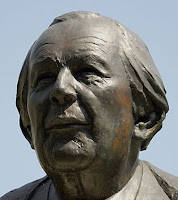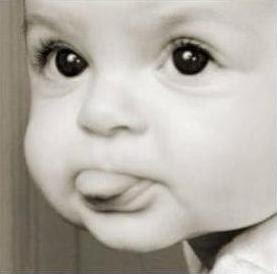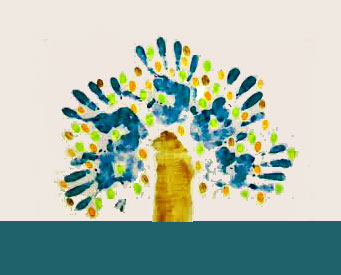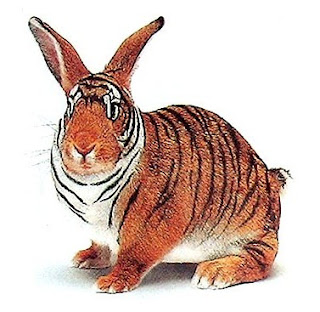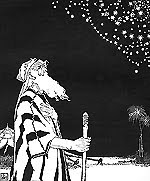"Roaring Twenties" is a phrase used to describe a period of sustained economic prosperity in North America and Europe (principally Paris, London, and Berlin). The phrase refers to a period of social, cultural, and artistic dynamism. 'Normalcy' returned to politics in the wake of World War I, jazz music blossomed, the flapper redefined modern womanhood, Art Deco peaked, but the Wall Street Crash of 1929 punctuated the end of the era. As a period, the Roaring Twenties brought several inventions and discoveries of far-reaching importance, unprecedented industrial growth, accelerated consumer demand and aspirations, and significant changes in lifestyle and culture.
 |
Dancing the Charleston
John Held, "Teaching old docs new tricks," Life Magazine, 1928 |
The Weimar Republic (1918-1933). Proclaimed on November 9, 1918, the Weimar Republic marked the first German experiment in democracy, producing a period of intense and uncensored intellectual and cultural productivity. Yet, filling the brief time slot between World War I and the rise of the Nazis, Weimar Germany was also characterized by social upheaval,
crisis and
hyperinflation (1919-1923), and
general resentment for the losses of the war. The result was a short-lived era of extremes in which the rich lived in excess and the unemployed and poor increased daily.
 |
Raoul Hausmann, ABCD (Self-Portrait), ink and collage, 1923-24
Musée national d'art moderne, Centre Georges Pompidou, Paris |
Retaining the emotional intensity of German Expressionism, while advocating a return to realism and direct social criticism, artists such as Otto Dix and George Grosz captured their time and society with blunt honesty and a cynical insight that was often rooted in horrific personal experiences.
 |
| Otto Dix, Cardplayers, drypoint, 1920 |
Dix persistently depicts Germans as crippled. Resulting from Dix's nihilist vision, the expressionist characters that populate his paintings and prints do not entirely reflect the condition of the German population in the 1920s.
The artists associated with the Neue Sachlichkeit or New Objectivity are identified as "verists" (Hartlaub). They opposed political impotence but without exemplifying any "return to order." Their form of realism distorted appearances to emphasize the ugly. They wanted to expose what they considered the ugliness of reality, so their art was raw, provocative, and harshly satirical.
 |
Dix, Newborn Baby on Hands (Portrait of Ursus Dix), 1927
Staatsgalerie, Stuttgart |
Goldene Zwanziger (Golden Twenties), 1924-1929.
Gustav Stresemann was Reichskanzler for 100 days in 1923, and served as foreign minister from 1923 to 1929, a period of relative stability for the Weimar Republic which is known in Germany as
Goldene Zwanziger, "Golden Twenties". Prominent features of this period were a growing economy and a consequent decrease in civil unrest.
Once civil stability had been restored, Stresemann began stabilising the German currency, which promoted confidence in the German economy and helped the recovery that was so ardently needed for the German nation to keep up with their reparation repayments, while at the same time feeding and supplying the nation. Once the economic situation had stabilised, Stresemann could begin putting a permanent currency in place, called the Rentenmark (1924) which again contributed to the growing level of international confidence in the German economy.
 |
| Martin Wagner, Planned remodelling of Potsdamer and Leipziger Platz, Berlin, 1929 |
In order to help Germany meet her reparation obligations, the
Dawes Plan was created in 1924. This was an agreement between American banks and the German government in which the American banks lent money to German banks with German assets as collateral to help it pay reparations. The German railways, the National Bank and many industries were therefore mortgaged as securities for the stable currency and the loans. Shortly after, the French and Germans agreed that the borders between their countries would not be changed by force, which meant that the Treaty of Versailles was being diluted by the signing countries. Other foreign achievements were the evacuation of the Ruhr in 1925 and the 1925 Treaty of Berlin, which reinforced the Treaty of Rapallo in 1922 and improved relations between the Soviet Union and Germany. In 1926, Germany was admitted to the League of Nations as a permanent member, improving her international standing and giving her the ability to veto League of Nations legislation. However, this progress was funded by overseas loans, increasing the nation's debts, while overall trade increased and unemployment fell. Stresemann's reforms did not relieve the underlying weaknesses of Weimar but contributed to a stable democracy. The major weakness in constitutional terms was the inherent instability of the coalitions. The growing dependence on American finance was to prove dangerous and Germany was one of the worst hit nations in the
Wall Street Crash of 1929.
 |
Dancing and Jazz, Esplanade Hotel, Berlin 1926
Deutsches Bundesarchiv Bild 183-K0623-0502-001 |
There was an extraordinary cultural renaissance in Germany in the 1920s. During the worst phase of hyperinflation in 1923, clubs and bars were full of speculators spending their profits daily. The response of the intellectuals in Berlin was to condemn the excesses of capitalism and demand revolutionary changes on the cultural scenery. Influenced by the brief cultural explosion in the Soviet Union, German literature, music, theatre and cinema entered a phase of remarkable creativity. Innovative street theatre brought plays to the public, the cabaret scene and jazz bands became very popular. Modern young women were Americanised, wearing makeup, short hair, smoking and breaking with traditional mores. Euphoria surrounded the figure of
Josephine Baker in Berlin, where she was considered an "erotic goddess" and in many ways admired and respected for providing the German public with "ultramodern sensations." New Objectivity found expression in the visual arts. The
Bauhaus school new industrial prototypes, which led to functional design and modern architecture.
 |
Walter Gropius, Bauhaus, Dessau, 1925
MHDE |
. It was the flourishing of the arts and sciences that happened during the Weimar Republic, 1919-1933, and this period is frequently cited as one of those with the highest level of intellectual production in human history. Germany was the country with the most advanced science, technology, literature, philosophy and art.
"Remarkable for the way it emerged from a catastrophe, more remarkable for the way it vanished into a still greater catastrophe, the world of Weimar represents modernism in its most vivid manifestation" (Marcus Bullock).
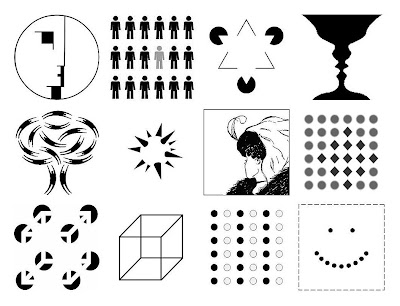 |
| Gestalt and Theory of Perceptual Organization |
Notable cultural figures in the Weimar Republic
Science. Albert Einstein, Max Born, Werner Heisenberg
Philosophy and Theory. Martin Heidegger, Martin Buber, Max Weber, Walter Benjamin, Theodor Adorno
Gestalt Psychology. Max Wertheimer, Wolfgang Köhler, Kurt Koffka
Literature. Bertolt Brecht, Hermann Hesse, Thomas Mann
Theater and Film. Max Reinhardt, Marlene Dietrich, Fritz Lang, Robert Wiene
Visual Arts. Otto Dix, George Gross, Max Beckmann, August Sander, John Heartfield, Paul Klee, Kurt Schwitters, Max Ernst
Architecture. Erich Mendelsohn, Walter Gropius, Mies van der Rohe
Online resources
Roaring Twenties
Economy
Einstein
Flapper
Art Deco
Weimar Republic
Post-Expressionism
New Objectivity
Hyperinflation
Einfühlung
Gestalt
Machine Aesthetic
Bauhaus
Additional resources








